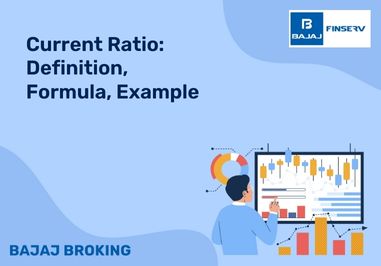ELSS or Equity Linked Saving Scheme and ULIP or Unit Linked Insurance Plan are popular investment options. There are several reasons behind the same, starting from their tax benefits to how you get to enjoy steady returns and much more. And though these investment products have some similarities like tax benefits, they also have some major differences.
Understanding the differences between ULIP and ELSS is crucial for investing in these products. Once you are aware of their advantages, differences, and more, you can make an informed comparative analysis between the two and see which product better suits your needs and investment style.
Continue reading as we explore ULIP vs ELSS in detail.
Exploring ULIPs and ELSS
Equity Linked Savings Scheme or ELSS can be understood as a variety of mutual funds that invest in equity stocks of companies on the stock exchange. One of the primary benefits of investing in ELSS is that they are market-linked, meaning the returns on these products are comparatively higher. However, you should also not forget that with the possibility of higher returns comes higher risks. The funds are subjected to market volatility making them risky.
Alternatively, when it comes to Unit Linked Insurance Plans or ULIPs, they have quite a reputation as a popular insurance product that also offers investment opportunities. The premiums of your ULIP scheme are invested into a variety of fund options, like debt, equity, mixed, and more.
Additionally, you also get life insurance coverage with death benefits that can be accessed by the nominee/family members in case of unexpected demise of the policyholder. It offers a variety of other benefits like the flexibility to switch funds, partial withdrawals, and much more.
Further, the lock-in period of both the products, ELSS and ULIPs varies. In addition to that, here are some other major differences between both the products.
As mentioned earlier, both ULIPS and ELSS offer tax-saving opportunities. However, the precise benefits differ. Let's understand how.
ELSS is a kind of investment in mutual funds where the tax benefits offered are covered under section 80C of the IT Act.
Since the lock-in period of ELSS funds is around 3 years, the gains from the investment are considered long-term capital gains. According to section 80C of the Income Tax Act, long-term capital gains up to ₹1 lakh are exempted from taxes; however, gains of ₹1 lakh and above are taxed at 10%.
Alternatively, ULIPs are insurance instruments with investment options involved. Here, the premiums paid on the scheme are eligible for tax deductions of up to ₹1.5 lakhs as per section 80C of the IT Act. Additionally, the returns on these investments are subject to taxation as per the income tax slab of the investor.
To draw a comparison between ULIP and ELSS, it is also important to understand their cost structure and fees. With ELSS, you'll have to bear different types of expenses, like entry load, exit load, annual expense ratio, and assets under management per annum. The entry load charges for these investments may vary between 2 to 7%; however, generally, they are charged at 2.5%. Further, the annual asset management or AUM is also charged at generally 2.5%.
Alternatively, for ULIPs, the management costs are comparatively higher. The most prominent fees involved in ULIPs are fund management charges, administration charges, mortality fees, premium allocation fees, etc. These charges vary based on the type of ULIP plan and can range around 20% of your premiums in the starting year.
When it comes to withdrawals or accessing these funds, it is important to compare the lock-in period and liquidity of both investments. For ELSS, generally, these have a lock-in period of around 3 years, meaning during this time, you're not allowed to withdraw any funds or your invested amount. Once the lock-in period is over, investors are eligible to sell their stocks or withdraw the funds whenever they like.
For ULIPs, the general lock-in period is 5 years. This means you have to wait during this time to sell your stocks or withdraw your funds. Once the lock-in period is over, you may easily access these funds or even surrender your investment anytime you like.
Now, let's talk about one of the crucial factors that determine which investment is suitable for you, and that is the potential growth or returns on the investment.
For ELSS, these are types of mutual funds where investments are majorly made in equities and related products. This means the potential growth and returns of your investments are affected by the performance of these equities. The value might go up and appreciate, given the market is performing well and thus offering you better returns. However, in the case of poor market performance, the growth potential and returns also decline.
For ULIPs, the product offers combined benefits of both: insurance and investment. Here, the growth potential and returns are affected by the performance of underlying assets, which can be equities, mutual funds, bonds, and much more. This means the potential to grow is quite diverse. However, the returns are comparatively lower as a part of the premium amount goes towards the insurance coverage.
Understanding market fluctuations and risks can come in handy to understand the growth potential and returns of both: ULIPs and ELSS.
As discussed, the minimum holding period for ELSS is 3 years, however, for ULIPs, it is 5 years. An investor can liquidate their investments only once the minimum holding period is over.
ULIP vs ELSS: A Detailed Investment Analysis
Now that you've read all about ELSS and ULIPs, you can easily choose which one works better for you. Here is a table that can help you make a quick comparison of ELSS vs ULIP: which is better?
Features
| ELSS
| ULIP
|
Tax-Saving Opportunities
| According to section 80C of the Income Tax Act, long-term capital gains up to ₹1 lakh are exempted from taxes; however, gains of ₹1 lakh and above are taxed at 10%.
| The premiums paid on the scheme are eligible for tax deductions of up to ₹1.5 lakhs as per section 80C of the IT Act.
|
Costs and Fees Involved
| Involves costs like entry load, asset under management expenses, exit load, and more.
| Involves costs like administration charges, fund management charges, mortality expenses, and so on.
|
Ease of Access to Funds
| Funds can be accessed and withdrawn once the lock-in period of 3 years is over.
| Funds can be accessed and withdrawn once the lock-in period of 5 years is over.
|
Growth Potential and Returns
| The growth potential is subject to market volatility and fluctuations and depends on investment in equities and related products.
| The growth potential is subject to market volatility and fluctuations and depends on the value of a variety of underlying assets like bonds, MFs, equities, etc.
|
Minimum Holding Period
| Have a minimum holding period of 3 years.
| Have a minimum holding period of 5 years.
|
Final Takeaway
All in all, both ULIPs and ELSS are great investment products that can help with wealth creation. With investment in these products, you earn tax-saving benefits, portfolio diversification, and several other benefits. However, your choice between the two may vary based on your risk-taking abilities, investment goals, and other factors.
Do you have a trading account app or demat account app?
You can open an account with Bajaj Broking in minutes.
Download the Bajaj Broking app now from Play Store or App Store.
Disclaimer: Investments in the securities market are subject to market risk, read all related documents carefully before investing.
This content is for educational purposes only. Securities quoted are exemplary and not recommendatory.
For All Disclaimers Click Here: https://www.bajajbroking.in/disclaimer












